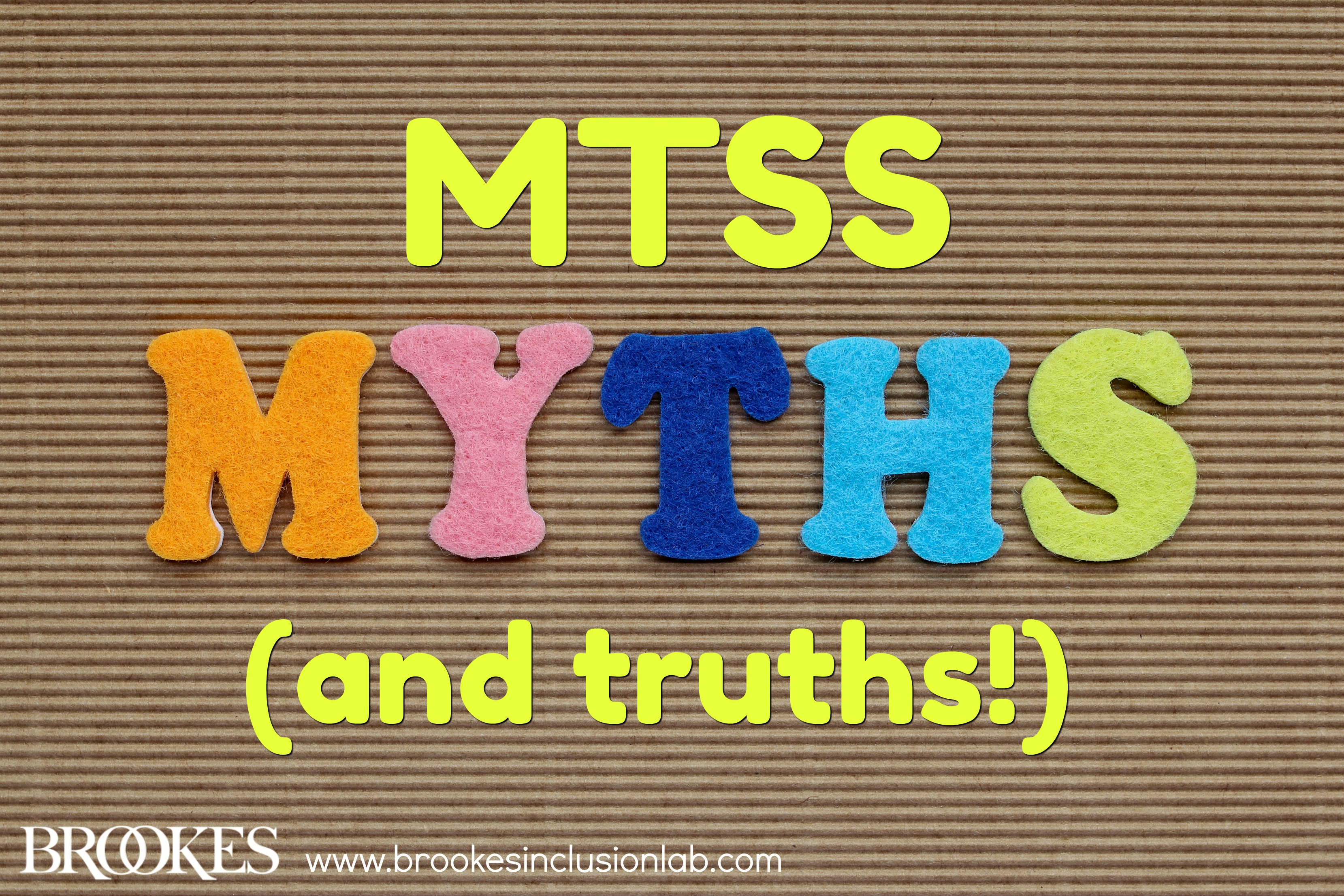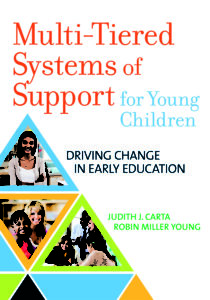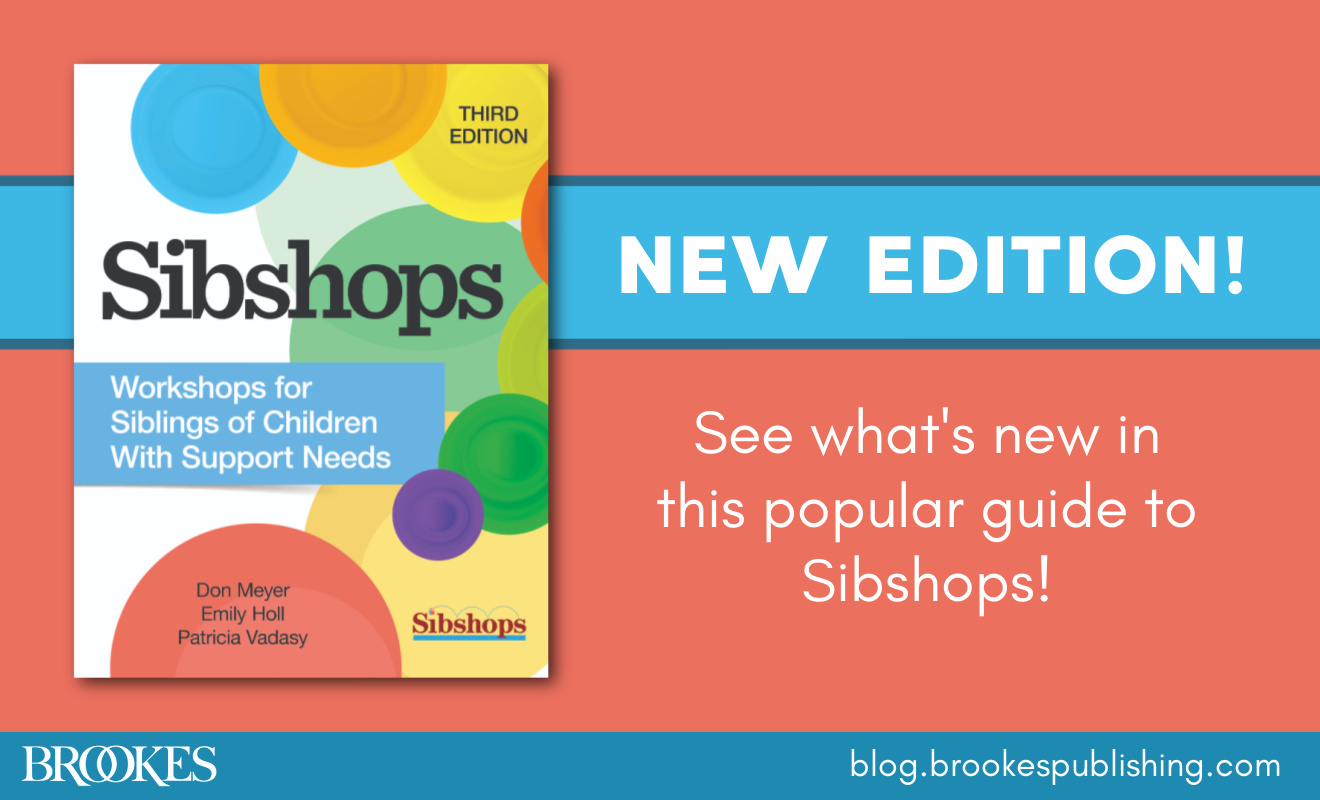5 Myths and Truths about the MTSS Framework and Young Children with Disabilities
February 28, 2019
Multi-tiered systems of support (MTSS) have been widely adopted in both early childhood and K-12 settings, and it’s easy to see why these three-tiered systems are a good fit with inclusive education. They help ensure that children get the specific supports they need without having to fail first. They address students’ diverse learning needs. In early childhood settings, they help every child learn the early academic skills they need to get ready for kindergarten.
 But some myths still persist about MTSS and children with disabilities. If a child has an IEP, does that mean they can’t participate in MTSS? Should children with disabilities only receive more intensive Tier 2 and 3 interventions? Today we have an excerpt from an excellent book—Multi-Tiered Systems of Support for Young Children, edited by Judith J. Carta, & Robin Miller Young—that will clear up the myths and misconceptions about MTSS and young children with disabilities. Read on for five myths and truths about MTSS, and check out the book for comprehensive MTSS guidance!
But some myths still persist about MTSS and children with disabilities. If a child has an IEP, does that mean they can’t participate in MTSS? Should children with disabilities only receive more intensive Tier 2 and 3 interventions? Today we have an excerpt from an excellent book—Multi-Tiered Systems of Support for Young Children, edited by Judith J. Carta, & Robin Miller Young—that will clear up the myths and misconceptions about MTSS and young children with disabilities. Read on for five myths and truths about MTSS, and check out the book for comprehensive MTSS guidance!
MYTH: Children with disabilities and IEPs cannot participate in MTSS.
TRUTH: While children with identified disabilities should receive special education and related services related to their annual goals as documented on their IEPs, these services should not prevent them from participating in MTSS. Some of a child’s needs may be addressed through the IEP; however, other needs may not be identified for intensive special education services. For example, a child with disabilities and an IEP may have delays in expressive communication and receive special education services to address IEP goals in the language and communication domain. However, universal screening that is part of MTSS may identify that child as at risk in early math skills. That child with an IEP might then receive Tier 2 services to address early math skills (i.e., the child’s early math skills did not warrant inclusion of annual goals on the IEP). That child also may have strengths in social interaction, self-care skills, and motor skills and receive Tier 1 programming and continue receiving this Tier 1 core support as long as he or she demonstrates growth rates in these areas that fall within the expected range for typically developing children.
MYTH: MTSS is intended to replace early childhood special education. If a school district has adopted MTSS, then children cannot be referred for or receive early childhood special education (ECSE).
TRUTH: IDEA is a federal statute that provides procedural safeguards to protect children’s and parents’ rights with respect to special education and related services. Children who meet IDEA, state, and local education agency criteria for a “disability” and are determined eligible for special education and related services must have individualized goals and receive ECSE services as documented on the IEP. The two systems work together to provide appropriate and required services and supports to all children in a program.
MYTH: A child must experience MTSS and fail supports provided at each tier prior to being referred for an evaluation to determine eligibility for special education and related services.
TRUTH: The federal Office of Special Education Programs (OSEP) is very clear that MTSS may not be used to delay referral, evaluation, or the provision of special education and related services. A memo from OSEP on April 29, 2016, further clarifies that states and local education agencies have an obligation under the Individuals with Disabilities Education Act (IDEA) to ensure that evaluations of all children suspected of having a disability, including evaluations of 3-, 4-, or 5-year-old children enrolled in preschool programs, are not delayed or denied because of implementation of a Response to Intervention strategy.” (Early Childhood Technical Assistance Center [ECTA], n.d.) Although it is possible to use information and data on progress for a child who participated in MTSS and was subsequently referred for special education evaluation, participation in MTSS may not replace or delay the comprehensive CSE.
MYTH: Children with disabilities should only be served in the most intensive tier.
TRUTH: Many people assume that children who have disabilities and receive special education services, who are then identified as at-risk through universal screening, will automatically receive instruction at the most intensive level (e.g., Tier 3). However, it is the assessment of the child’s performance, team- based problem-solving, and progress-monitoring data that determines whether a child would benefit from more intensive instruction at Tiers 2 or 3. Disability alone does not determine the intensity of instruction. MTSS is designed to be a fluid process with movement into and out of specific levels of tiered instruction over time. Children with disabilities may begin to receive more intensive services at Tier 2 or 3, and movement between the tiers will be based on their response to intervention within a tier.
MYTH: MTSS cannot be used in a self-contained special education class in which all children have disabilities and IEPs.
TRUTH: The use of MTSS is not restricted to blended or inclusive classroom settings. It can be a very effective process for providing services in self-contained classrooms as well. Just as in blended classrooms, children in self-contained classrooms present a range of strengths and needs that can be addressed through tiered instruction. For example, some children may benefit from small-group or individualized instruction in early writing skills whereas others may make sufficient progress by participation in the core curriculum, Tier 1. Also, the self-contained class may include children who can participate successfully in a core physical development curriculum (e.g., physical education, motor time activities) or a core social-emotional curriculum. Likewise, universal assessment can help teachers understand the range of skills in identified areas or domains, or it may pinpoint areas to change within the core curriculum.
MTSS can benefit all learners across a variety of settings. It gives you a framework for identifying kids who need more instructional support, implementing those supports, and quickly determining whether the strategies are working. If you teach in an early childhood setting and want an evidence-based planning guide to making MTSS work for you, check out the book:
 Multi-Tiered Systems of Support for Young Children
Multi-Tiered Systems of Support for Young Children
Driving Change in Early Education
Edited by Judith J. Carta, Ph.D., & Robin Miller Young, Ed.D.
Discover how to design, implement, and monitor successful MTSS for children ages 3–5 across environments, including classrooms, programs, districts, and at the state level. Includes 6 online videos to enhance your application of concepts covered in the book.




Write a Comment
Your email address will not be published. Required fields are marked *
Post a Comment